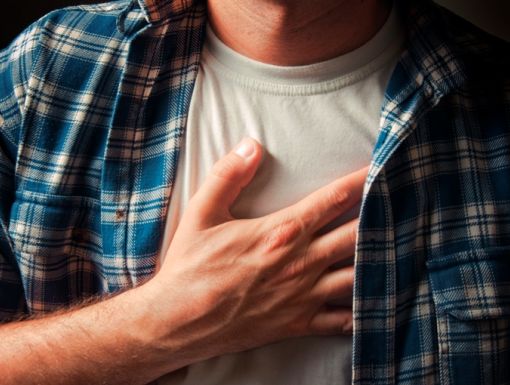
What is Chronic Obstructive Pulmonary Disease? 5 Top Symptoms to Be Aware of
For people with chronic obstructive pulmonary disease, or COPD, normal breathing can be an ongoing struggle. COPD refers to a group of diseases that cause airflow blockage and breathing-related problems and includes emphysema and bronchitis. While COPD isn’t curable, it is often preventable and treatable.
According to the American Lung Association, more than 12 million Americans suffer from COPD, but millions more may have it without even knowing it. With COPD, the airways in your lungs become inflamed and thickened causing the tissue where oxygen is exchanged to be destroyed. The flow of air in and out of your lungs decreases. When that happens, less oxygen gets into your body. As the disease gets worse, shortness of breath makes it harder to remain active.
What are the symptoms of COPD?
COPD is often not found until the disease is advanced because some people do not know the early warning signs and symptoms. Don't wait for symptoms to become severe because valuable treatment time could be lost. Early detection of COPD is key to successful treatment. The Centers for Disease Control points to these symptoms:
- Frequent coughing or wheezing
- Excess phlegm or mucus production
- Shortness of breath
- Trouble taking a deep breath
- Excessive cough
Smoking is the biggest risk factor for COPD. Approximately 85% to 90% of COPD cases are caused by smoking. Female smokers are nearly 13 times as likely to die from COPD as women who have never smoked. Male smokers are nearly 12 times as likely to die from COPD as men who have never smoked.
Other risk factors for COPD include:
- Exposure to air pollution
- Breathing secondhand smoke
- Working with chemicals, dust and fumes
- A history of childhood respiratory infection
- A genetic condition called Alpha-1 deficiency, which causes lung and liver damage
How is COPD treated?
Proper treatment can help to decrease the symptoms and the severity of COPD. It’s important to discuss with your doctor what treatment options are best for you.
Quit smoking: For people who smoke, the most important part of treatment is to immediately stop smoking. Learn more about Ochsner’s smoking cessation program.
Medication: Symptoms such as coughing or wheezing can be treated with medication.
Avoid lung infections: Lung infections can cause serious problems in people with COPD. Certain vaccines, such as the flu vaccine, are especially important for people with COPD.
Using supplemental oxygen: Some people may need to use a portable oxygen tank if their blood oxygen levels are low.
Surgery: Some people with severe COPD symptoms may have a hard time breathing all the time. In some of these cases, lung surgery is performed to improve breathing, but not everyone is a candidate for lung surgery.
Pulmonary rehabilitation: Treatment programs used to teach people how to breathe better and conserve their energy, as well as provide advice on nutrition and exercise.
How is COPD diagnosed?
A simple test, called spirometry, can be used to measure your lung function and detect COPD. Your doctor will have you blow air into a mouthpiece and tubing attached to a small machine. The machine measures the amount of air you blow out and how fast you can blow it.
Your pulmonologist may also want you to have a chest X-ray or other tests, such as an arterial blood gas test. This test measures the oxygen level in your blood and indicates how well your lungs can move oxygen into your blood and remove carbon dioxide from your blood.
A diagnosis of COPD can be life-changing. The good news is that most people can maintain a good quality of life. The pulmonary rehabilitation program at Ochsner focuses on patients with chronic obstructive pulmonary disease and other respiratory conditions. Our team will design a treatment plan tailored to the needs of each patient.



